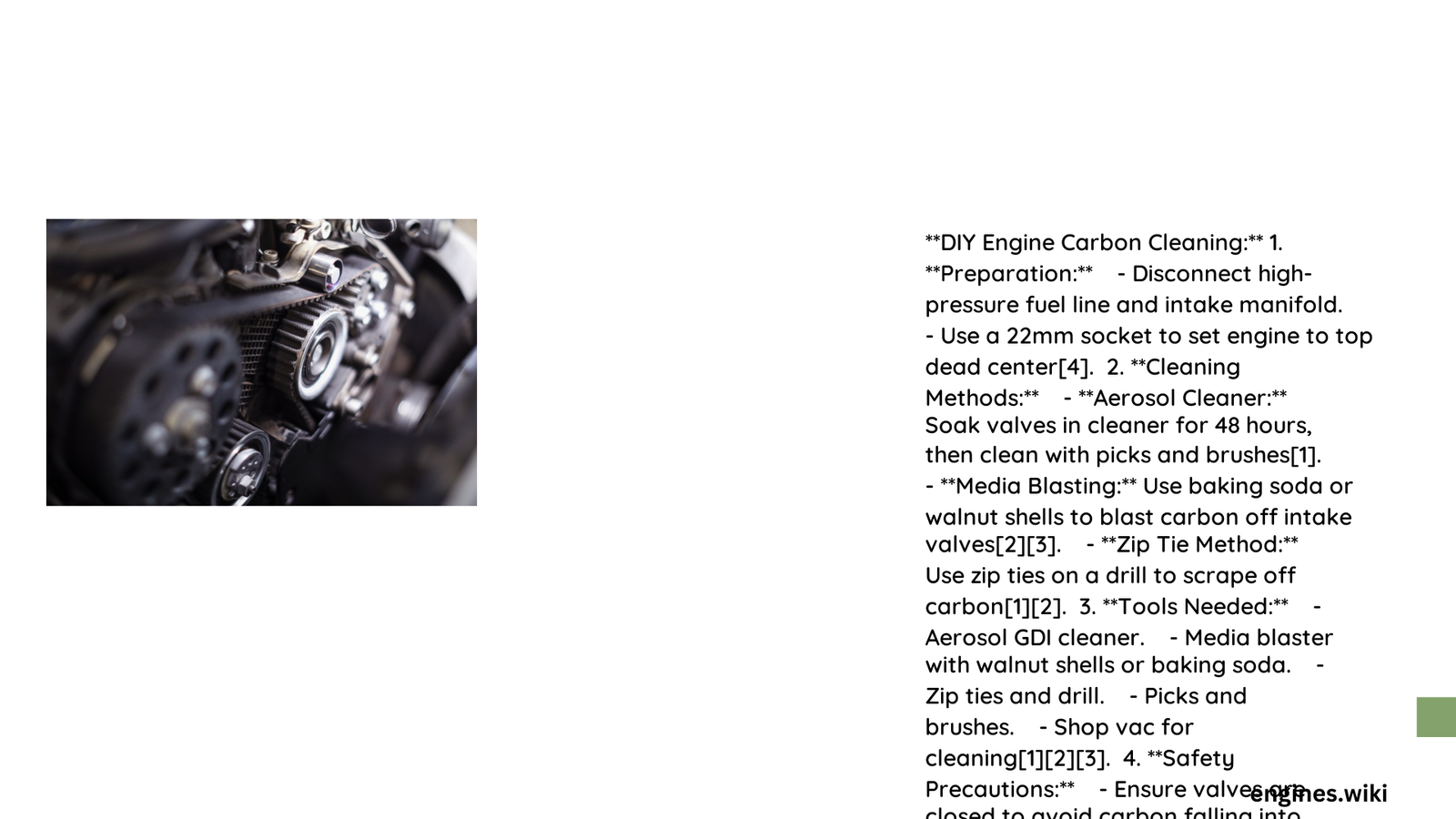Engine carbon buildup can significantly impact vehicle performance, causing reduced fuel efficiency, decreased horsepower, and increased emissions. DIY engine carbon cleaning offers a cost-effective solution for automotive enthusiasts to restore their engine’s optimal functionality. By understanding various cleaning techniques, tools, and methods, vehicle owners can effectively remove carbon deposits and enhance overall engine performance without expensive professional services.
What Causes Carbon Buildup in Engines?
Carbon deposits accumulate in engines due to several factors:
- Incomplete fuel combustion
- Low-quality fuel consumption
- Short driving distances
- Direct injection engine designs
- Excessive idling
Tools and Materials Required for Engine Carbon Clean DIY
| Tool/Material | Estimated Cost | Effectiveness |
|---|---|---|
| Chemical Cleaner | $15-$30 | Moderate |
| Decarbonizing Machine | $500-$1000 | High |
| Media Blasting Kit | $100-$250 | Very High |
| Protective Gear | $20-$50 | Essential |
How to Perform Chemical Carbon Cleaning?

Step-by-Step Chemical Cleaning Process
- Preparation
- Ensure engine is at operating temperature
- Park vehicle on level ground
-
Gather necessary cleaning materials
-
Application Techniques
- Select high-quality carbon cleaning solution
- Follow manufacturer’s recommended dosage
- Spray directly into intake manifold
-
Allow cleaner to circulate through engine system
-
Post-Cleaning Evaluation
- Monitor engine performance
- Check for improved acceleration
- Observe fuel efficiency changes
What Are Mechanical Carbon Cleaning Methods?
Mechanical cleaning involves more invasive techniques:
- Intake manifold removal
- Manual carbon deposit scraping
- Media blasting with walnut shells or baking soda
- Specialized cleaning picks and brushes
Recommended Safety Precautions
- Wear protective eyewear
- Use chemical-resistant gloves
- Work in well-ventilated area
- Disconnect battery before extensive engine work
How Often Should Engine Carbon Cleaning Be Performed?
Recommended cleaning frequencies:
- Direct injection engines: Every 30,000 miles
- Traditional fuel systems: Every 50,000 miles
- High-performance vehicles: Annually or per manufacturer recommendations
What Are Expected Performance Improvements?
Potential benefits of engine carbon cleaning:
- 10-15% improved fuel efficiency
- 5-20 horsepower restoration
- Smoother engine operation
- Reduced exhaust emissions
- Extended engine component lifespan
Cost-Benefit Analysis
| Cleaning Method | Average Cost | Performance Gain | Time Investment |
|---|---|---|---|
| Chemical Cleaner | $20-$50 | Low-Moderate | 30-60 minutes |
| Mechanical Cleaning | $100-$300 | High | 2-4 hours |
| Professional Service | $300-$800 | Very High | 1-2 hours |
Pro Tips for Effective Engine Carbon Cleaning
- Use high-quality fuel consistently
- Perform regular maintenance
- Avoid frequent short-distance driving
- Monitor engine performance indicators
- Consult vehicle manufacturer guidelines
Warning Signs Indicating Carbon Buildup
- Reduced acceleration
- Rough idling
- Decreased fuel economy
- Check engine light activation
- Unusual engine noises
Conclusion
DIY engine carbon cleaning represents a proactive approach to vehicle maintenance. By understanding various techniques and investing minimal time and resources, vehicle owners can significantly improve engine performance and longevity.
